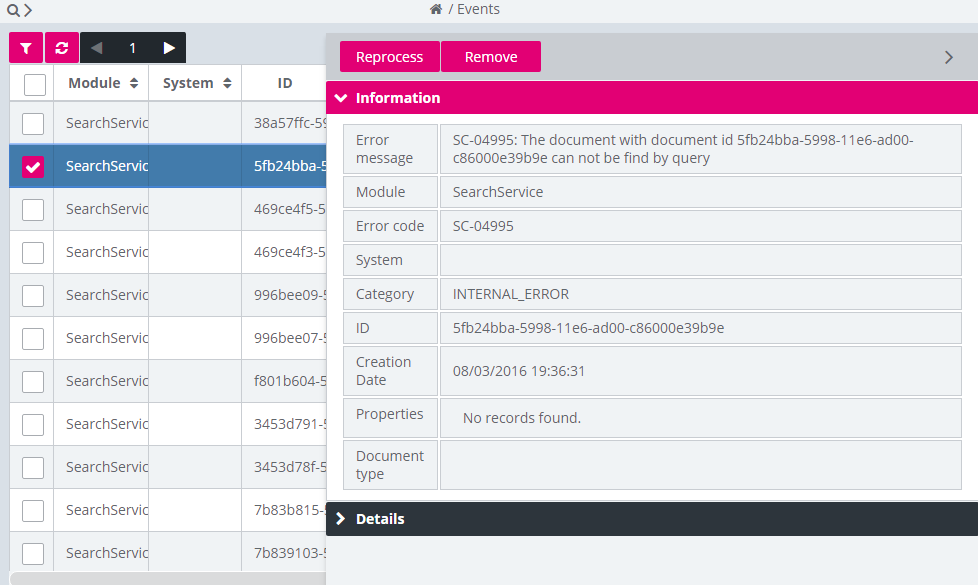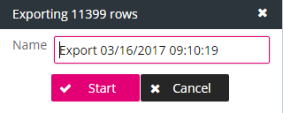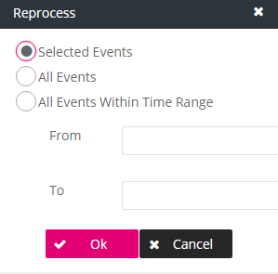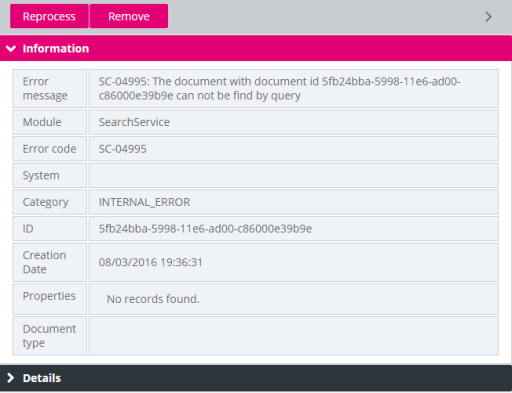Reprocessing events
The Events functionality allows you to view and reprocess events of other modules (e.g. ImageMaster Content Services for E-Mail, ImageMaster Content Services for SharePoint, full text indexing, etc.). The default set of modules for which event reprocessing is supported can be enhanced by customer specific extensions.
With sufficient permissions, you can access the Events panel via the navigation menu:

Figure 246: Maintenance – events
In case a module fails for some reason, it can register an event with general information and possibly with an additional XML file. The reprocessing is implemented for each module separately.
The Events workspace consists of the following main areas:
-
the upper navigation menu with the possibility to select a module
-
the hit list panel with a functional toolbar
-
the sliding information panel
Navigation menu

Figure 247: Maintenance – events: navigation menu
The following module names can be listed. Depending on your system setup, not all may be visible to you, or additional entries can be available based on customer specific extensions:
-
PropagationService
-
SearchService
-
SharePoint
-
WorkflowService
It is necessary to select a module in the modules menu before one may launch actions against the current selection or the complete result set of events.
Events hit list
The events hit list contains a list of all events with a functional toolbar, where common ImageMaster filtering functionality is supported. You can view detailed information for each event in the events information panel, see section below for more details. The following actions are available for events of each selected module:
-
export event hit list
-
copy details of the event to clipboard
-
delete the selected events
-
reprocess the selected events
To export an event hit list
-
Click More and select Export to export an Excel file. In the dialog a default name for the file is preset:

Figure 248: Maintenance – events: exporting an event hit list
-
Optionally adjust the name and click Start.
-
When the export is ready for download, a message appears. Click the link to download the export in the defined directory. You can later manage event exports in the export view according to section Activities – personal exports in the WorkplaceClient user manual [UM WorkplaceClient].
All exports are downloaded in the background, so you can continue your work while the export is in progress.
To copy details of an event to the clipboard
-
Select an event in the hit list.
-
Click More and select Copy Details to Clipboard from the menu.
A dialog is displayed with additional XML data:

Figure 249: Maintenance – events: copying event details to clipboard
-
Copy the text to the clipboard. After copying, the window is closed automatically.
-
The event details are also available in the event information panel (see section below).
To delete selected events
-
Select one or several events to be deleted.
-
Click More and select Remove from the menu.
-
Confirm the deletion in the dialog.
To reprocess the selected events
-
Select one or several events to be reprocessed.
-
Click the icon
 .
. -
The Reprocess window will be displayed:

Figure 250: Maintenance – events: reprocessing events
-
Select the desired option:
-
Selected Events: The events selected in the hit list will be reprocessed.
-
All Events: All events of the specified module will be reprocessed.
-
All Events Within Time Range: Use the From and To fields to specify a time range for events to be reprocessed.
-
-
Click Ok to start the process.
-
To obtain a hit list with up-to-date values:
-
Click More and select Refresh from the menu.
-
Alternatively, click the icon “Reset” in the hit list tool bar.
-
Events information panel

Figure 251: Maintenance – events: information
You can see additional details about an event in the sliding information panel:
-
Information:
Expand the panel to obtain the following information on an event entry:
-
Error message: a detailed error description with possible resolution
-
Module: the affected module name (see possible module names above)
-
Error Code: an error identifier code
-
System: the source that causes the event
-
Category: an event category like “INTERNAL_ERROR”
-
ID: a unique event ID
-
Creation Date: the date when the event occurred
-
Properties: involved properties
-
Document type: the affected document type
-
-
Details: Expand this panel to view the information as XML data.